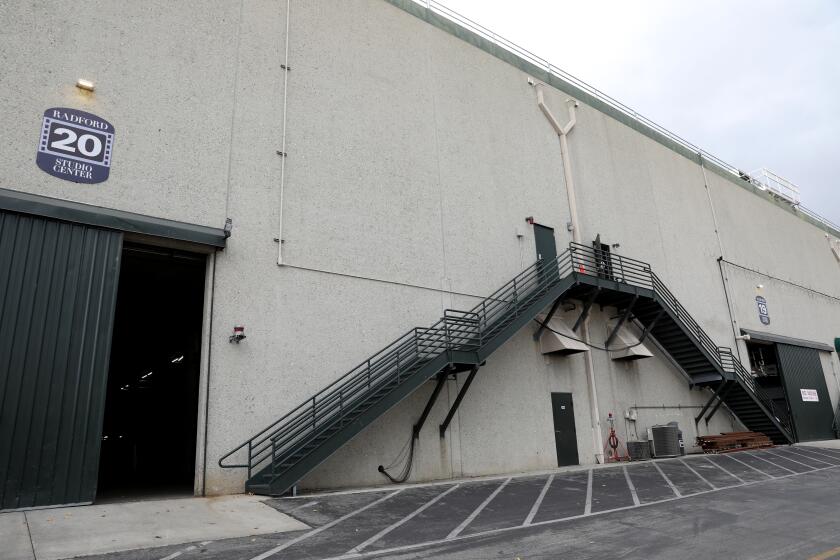There’s No Place Like Home : Business: A booming number of people are preferring to work out of their houses. Technology and lifestyle changes are fueling the decision.
About three years ago Pacific Bell service representatives noticed a change in their customers. Instead of the usual requests to add a phone line, many were asking about whole new systems.
“Increasingly they would say they were working at home,” says Shirley Small of PacBell’s San Ramon office. “Some were telecommuting, but a lot were starting up an entire office and needed some help. This was a complete change in pattern.”
In 1990, PacBell responded by setting up the Home Office Advisor Group that Small now manages. The service has grown to 300 full-time advisers around the state who help customers who want to set up businesses at home sort out their needs in the maze of call forwarding, call waiting, custom ringing, conference calling, priority ringing, call return and other exotic services.
These customers are extremely sophisticated, Small says. “We had 22 home-office customers at a focus group in Marina del Rey last week, asking people what they needed. Even the Tupperware people were saying if we could give them video phones or high resolution faxing, they could use it and would pay for it.”
Home-business entrepreneurs “have been a lost segment of people,” says Small, “and they need to know that large businesses and utilities care about them.”
The interest is understandable. This group of cutting-edge customers is exploding.
Link Resources, a market research firm, conducts a national survey of people who work at home and reports a jump from 26.8 million in 1989 to 41.1 million in 1993--more than a third of the adult work force. This includes people who operate full-time and part-time businesses, telecommuters and those who bring work home from their jobs.
“For many people, working at home is the new American dream,” says Sarah Edwards, who, with her husband, Paul, has become a Los Angeles self-employment expert. The Edwardses call these workers “open-collar” because home is a necktie-free workplace.
The Edwardses started a home business in 1974 and wrote their first book, “Working From Home,” in 1980. Now they have written four more books for home-based workers and dispense advice in a magazine column and a weekly show on the Business Radio Network. For computer users they founded the Working from Home Forum on CompUServe and they teach a course on working at home.
“In the past you had two choices: you had a job and worked for someone else or you became a business person, borrowed money and hired other people,” says Sarah Edwards. “But now people are starting to realize that it’s not as complicated as they thought to be self-employed.”
“These aren’t just people who have been laid off and have to start something new,” says PacBell’s Small. “A lot of the customers want a better quality of life, they don’t want to commute--especially in Southern California--and they are tired of the stress and the politics that go along through corporate life.”
In some ways the explosion in home business is related to the downsizing of corporate America, but that isn’t the whole picture, says Bernadette Grey, editor of Home Office Computing magazine, which increased in circulation from 350,000 to 440,000 in the last year.
“This is a baby-boomer lifestyle choice in many cases, and I really believe it’s here to stay,” she says.
The other factor fueling the open-collar movement is technology. The streamlining of computers, faxes and information technology has brought the electronic office from the corporate tower to the extra bedroom. (See adjoining story.)
“I call the technology ‘the great equalizer,’ ” says Sarah Edwards. It gives you all the power of an office staff.”
That was the attraction for Robert Griffith. After years as executive sales director for a corporation in New York, he moved to Southern California and started his own executive search firm. Two years ago, he set up shop in his two-story home in Tustin Ranch.
“I couldn’t have done it without the technology,” he says. “It gives you access to everything.”
His office includes three answering machines, five telephone lines including a dedicated fax line, three portable and six stationary telephones, two computers, a modem and printers.
“We just don’t miss a call,” he says. “I use the fax machine in the neighborhood of eight hours a day--and into the night when I’m doing business overseas.”
Recently his wife, Catherine, a regional sales manager for a publishing company, moved out of her Costa Mesa office to work at home. “Robert was enjoying it so much, I decided to try it.”
They remodeled the garage, adding lights, carpeting and phone lines. “It really shaped up well,” she says. “I feel very ‘90s.”
The 1993 Home Office Computing magazine survey shows that 98% of those working from home say they are happier running their businesses than working for someone else, and 96% would recommend working from home to others.
“It’s a new group and they have shaken off a stigma,” says Grey. “A few years ago if you said you were a consultant and working from home, it meant you were looking for a job.
“Now when you tell people you’re working from home, everyone thinks you have it made.”
More to Read
Inside the business of entertainment
The Wide Shot brings you news, analysis and insights on everything from streaming wars to production — and what it all means for the future.
You may occasionally receive promotional content from the Los Angeles Times.






